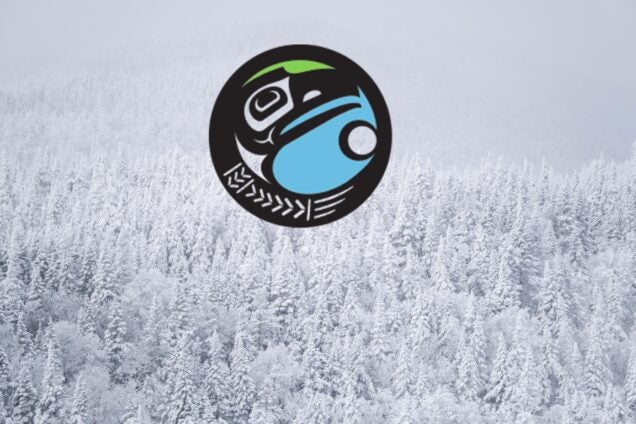Before RECONCILIATION, there must be TRUTH.
By: Rob Whelan, CASI Communications & Engagement Manager
Every year, at the end of September, Canadians take a brief pause in their hectic schedules to acknowledge Indigenous Peoples on the National Day for Truth and Reconciliation. This recognition is important and necessary, but let’s dig into why we do this and how to send it with meaningful reconciliation.
In July, I had the opportunity to attend the Indigenous Safety Cultural training session put on by I.SPARC (Indigenous Sport, Physical Activity & Recreation Council). Through the common language of sport, a group of 25 participants in varying areas of leadership in sport, we were whisked through a journey of learning, unlearning and ultimately came away equipped with some tools for action in our respective organizations. Part of CASI’s Vision is to be the global leaders in instructor education that is synonymous with a diverse and accessible snow sports industry. So, with that in mind, here’s a quick recap on some of the workshop’s takeaways.
The schedule was split into two distinct themes: Truth on day 1, Reconciliation on day 2. We learned that reconciliation for the trauma caused by colonization, residential schools, racialized violence (etc) can not happen until we understand the historical truths as well as the recent and still-present truths.
Change attitudes with Mutual Experiences
In snowboard instruction, we put a lot of emphasis on the “why.” Explaining or at least intrinsically knowing why we teach our students certain techniques and movements forms the foundation for understanding and ultimately, performance. So, to truly reconcile with our historical missteps with Indigenous Peoples, the foundation for the why lies in the truth .
A common theme throughout the teachings at the workshop centred on a path of togetherness. To move towards reconciliation, Indigenous people welcome the idea of walking together. One side can’t tell the other to change their attitude, but attitudes DO change through shared experience. In other words, independent research is great, but the fruits of that labour come alive when it is shared.
Key Truths
Here’s where the work starts, knowledge of what happened. This is obviously not an exhaustive list, that’s not the point. We’re all on our own journey of learning/unlearning so let’s ride through a few truths together! But first, dive into this quick video, laying out the truths in a lighthearted way:
- Colonialism is the process through which foreign people establish control over a territory, not just a historical event but, for many Indigenous Peoples, an ongoing system of power that continues to affect rights, land and culture.
- Kairos Blanket Excercise: This is not a “truth,” but a powerful exercise that teaches the effect of colonization, the history of Canada we rarely learn. In a scary way, it really showed the effects of introduction of disease, land theft and how it tore communities and families apart.
- Residential Schools (1920-1996): the forceful removal of First Nations children from their families in an attempt to assimilate them into white Canadian society.
- 60s Scoop: the act of children being “scooped” from their homes in the 1960s and sent away to be fostered and adopted by white families.
- The Indian Act: a policy designed to assimilate First Nations Peoples into mainstream Canadian society giving power to the government to regulate and control Indian status, bands and reserves. There were devastating repercussions at the time and they still exist on some levels today.
- Intergenerational Trauma: the culmination of much of the above, carried forward from generation to generation.
- Missing and Murdered Indigenous Women, Girls and Two-Spirited People (MMIWG2S)
- Sports Mascots: The 2-dimentional (mis)representation of Indigenous Peoples.
Privilege
People with privilege have the power to be disruptors, to be the leaders of change. Race, gender, socioeconomic status, sexual orientation, religion are some key indicators of privilege depending on your answers. This is not meant to get political, just to raise awareness of your one’s own ability to alter systemic issues. The key is to not feel ashamed of your power that you didn’t choose, but to use it for good.
Not in all cases, but many of us in this snowboard community possess privilege that can power change. The next section on reconciliation will give you some ideas on how to use privilege and this education for positive steps forward.
Reconciliation
Now that we’ve explored and understand some of the truths, the journey towards reconciliation can begin.
Action for reconciliation
Land acknowledgements: this is not news! But, finding a way to work this into your presentations as a snowboard instructor will be very powerful. Be creative and genuine in these statements, avoiding regurgitating a script.
- How to: check out https://native-land.ca/ to find out who’s land you are fortunate enough to play on!
- Example: My home mountain is located on the land of the Algonquin People where there is actually a run called Algonquin! Doing a warm up run there with students in a lesson would be a great way to tie in a land acknowledgement and doing so in a meaningful and appropriate way.
Create opportunity for Indigenous People in snowboarding. There is a historical and present lack of access to snowboarding for Indigenous People.
- CASI has supported Indigenous participation on certification courses and will continue to do so wherever possible. We already have a few scholarships set up for the 2025/26 season.
Support Indigenous led initiatives. Here are a few we can recommend: Indigenous Women Outdoors, WiSH – World Indigenous Sports and Health Society, The Skwelk̓wélt Indigenous Snowsports Team, etc. Stay tuned for details on CASI’s plans to support groups like these in a future blog post.
Present and share knowledge from the heart, it can’t come from a feeling of obligation. Going beyond protocol makes every difference in the effect it will have.
Continue your journey of learning through listening to Indigenous podcasts, reading Indigenous authors, follow Indigenous artists on Instagram and support their missions etc.
Check out 94 Calls to action: published by the Truth and Reconciliation Commission of Canada as a way to redress the legacy of residential schools and advance the process of Canadian reconciliation. Specifically for us as a group of snowboarders, numbers 87-91 directly apply to sport.
Conclusion
We are all on our own unique journey and the experience summarized in this blog post can’t possibly be an all encompassing education on the topic. These are my unique takes and you’ll continue to see CASI’s reconciliation efforts through our various communications outlets as a result.
The workshop closed with this simple, yet profound statement:
“What we do to acknowledge Indigenous People and our bounties benefits everyone.”
In other words, do good for Indigenous Peoples and we all win. Increase your own knowledge of the truths, share the experience with others and implement reconciliation on whatever level you can. Use your privilege to be a disruptor to the system.

ROB WHELAN
Communications & Engagement Manager
CASI Evaluator
